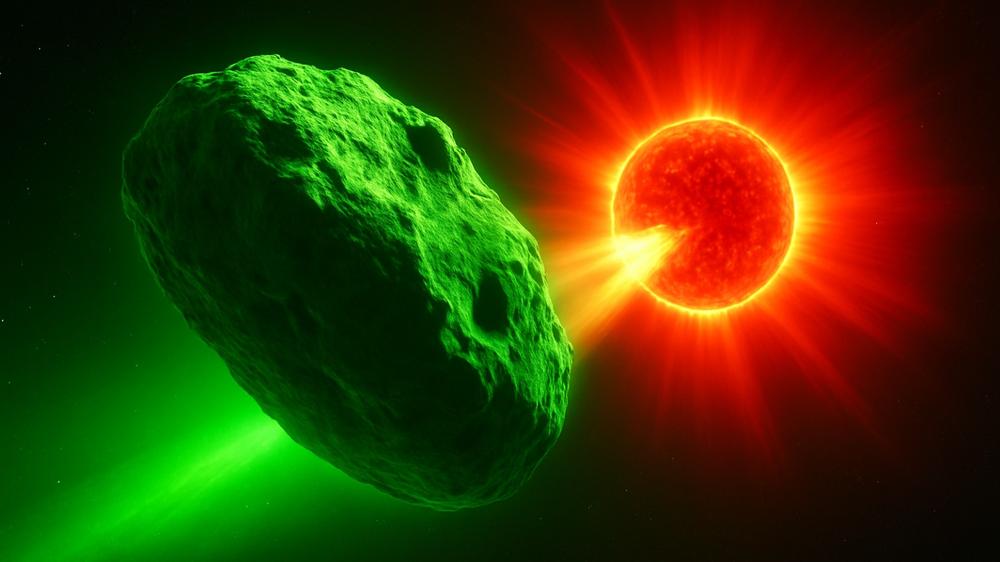3I/ATLAS, long suspected by some to be alien tech, was hit with a direct blast from a massive solar eruption, and new reports reveal the interstellar object could be way bigger than previously believed.
In late September, the Sun fired off a violent coronal mass ejection (CME), a blast of plasma and magnetic fields, directly at the mammoth object as it speeds through the solar system at roughly 137,000 mph.
While comets within our system have been recorded enduring such encounters before, seeing an interstellar visitor withstand a solar strike is unprecedented.
Back in 2007, NASA’s STEREO A spacecraft watched comet Encke lose and then quickly regrow its tail after a CME impact.
Scientists are monitoring whether the blast alters its trajectory or sheds new material that could reveal more about its makeup.
3I/ATLAS could be way bigger than believed
This energy blast comes as Harvard astrophysicist Avi Loeb, who has long argued that 3I/ATLAS could be alien technology, revealed it could be much bigger than originally thought.
By analyzing its movement and outgassing, Loeb estimates the mass of 3I/ATLAS exceeds 33 billion tons, far more than expected.
“Is 3I/ATLAS an unusually massive comet with an unusual chemical composition on an unusually rare trajectory or alien technology?” he wrote in a blog post.
“In both cases, the object could shed CO2 and H2O ices from material that collected on its frozen surface as it plowed through interplanetary and interstellar space. We should not decide about the nature of 3I/ATLAS based on the chemical composition of its skin, for the same reason that we should not judge a book by its cover.”
Loeb argues that if its core measures larger than three miles, the idea that it formed naturally from known interstellar materials becomes unlikely.
The astrophysicist has even suggested that 3I/ATLAS could be a technological artifact, possibly a probe sent to observe Earth. A paper he co-authored outlined two possibilities if the object is indeed intelligent: either its intentions are benign, or they are not.
Meanwhile other researchers, such as Susanne Pfalzner of Forschungszentrum Jülich, have suggested the object could even act as a “planet seed,” carrying material capable of kick-starting world formation around young stars.
NASA, however, maintains that 3I/ATLAS is just a comet and not a mothership on its way to invade Earth. Still, the agency itself recently announced possible evidence of ancient alien life on Mars, a discovery that only adds to the atmosphere of speculation.
And even if 3I/ATLAS isn’t the beginning of an alien war, the space agency has expressed a desire to launch nukes at a “city killer” asteroid headed towards the Moon in 2032.
As 3I/ATLAS continues its journey past Mars in the coming months, scientists and conspiracy theorists alike will be watching closely to see if this enigmatic traveler reveals more of its secrets.

 Frank founder Charlie Javice sentenced to 7 years in prison for defrauding JPMorgan Chase
Frank founder Charlie Javice sentenced to 7 years in prison for defrauding JPMorgan Chase